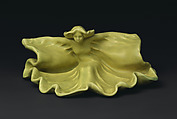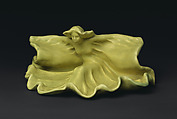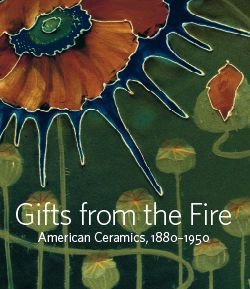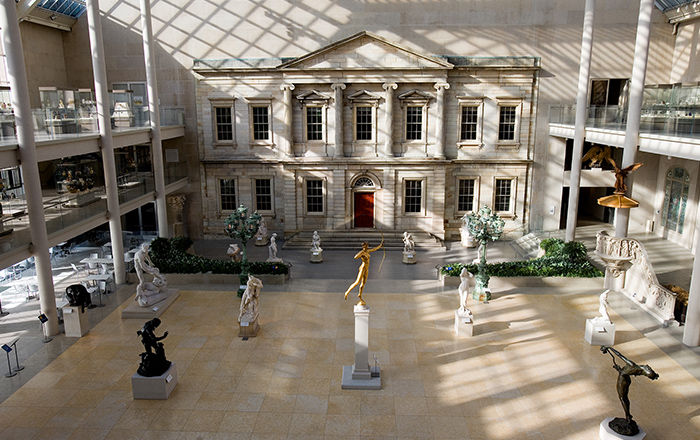Card tray with Loie Fuller
Designed by Anna Marie Valentien American
Manufacturer Rookwood Pottery Company American
It was in Cincinnati at the Rookwood Pottery that the drive toward more organic, plant-based forms found fruition. Whether it was a result of the general Zeitgeist of 1900 or more specific influences from Europe, some Rookwood artists gradually freed their designs from the constraints of wheel-based forms and painted decoration. Concurrent with the rise of a nature-based ornament was another one that was figurative and emotive, epitomized by the Symbolist painters. This mode found its most notable expression in the work of Artus Van Briggle, especially his famed Lorelei, featuring a lightly veiled nude woman encircling the vase, her arms embracing and forming the vase’s opening, her head and flowing hair similarly subsumed into the walls of the vessel itself (see 2015.548.1). Van Briggle first designed the model while still employed at Rookwood, later carrying on his work at the eponymous pottery he founded in Colorado Springs. His figurative work was carried on at Rookwood by Anna Marie Valentien, who created a number of vessels with Symbolist maidens, such as this card tray depicting a woman dynamically emerging from swirling veils of drapery, her hair flying outward. She represents the famous American-born dancer Loie Fuller, who was a sensation in Paris at the turn of the century. At the 1900 World’s Fair, Fuller had her own theater whose entrance boasted a gigantic representation of her and her flowing veils, all sculpted by the French artist Raoul Larche. Many objects were sculpted in her image, by Larche and other French designers, but Anne Valentien’s is one of the few American interpretations of her sexually-charged dance.
This image cannot be enlarged, viewed at full screen, or downloaded.
This artwork is meant to be viewed from right to left. Scroll left to view more.




